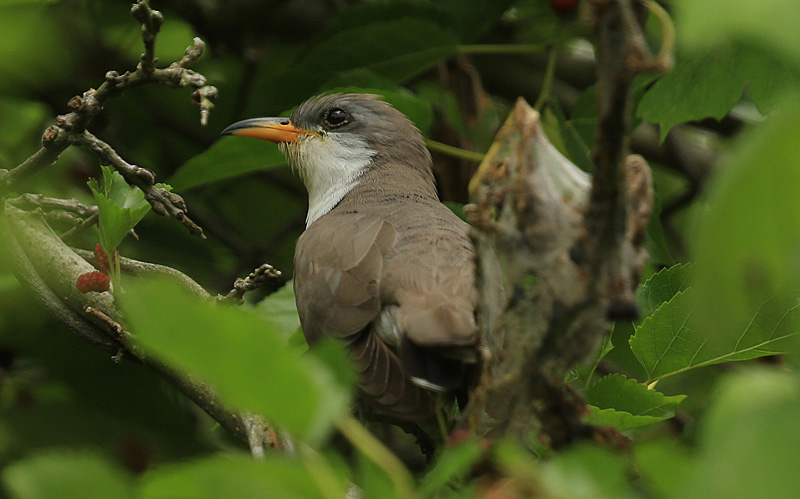Featured image by Seabamirum/Flickr.
by Center for Biological Diversity
LOS ANGELES— The Center for Biological Diversity notified the U.S. Fish and Wildlife Service today of its intent to sue the agency for failing to protect lifesaving critical habitat for the western yellow-billed cuckoo.
The songbird once ranged widely in the western United States but has declined to as few as 350 pairs concentrated in Arizona, New Mexico and California. The Center has worked for its protection for two decades, first submitting a scientific petition to list it under the Endangered Species Act in 1998.
After more than a decade of delay, the Service finally listed the western cuckoo as threatened in 2014. The agency also proposed the protection of more than half a million acres of the species’ critical habitat, but it has failed to finalize the designation.
“After many years of delay, it’s time for the Fish and Wildlife Service to protect the cottonwoods and willows and other streamside homes of this tenacious songbird,” said Brian Segee, a senior attorney at the Center. “Caring for our western rivers is essential to the cuckoo’s survival. And river restoration also has huge benefits for people and communities that need healthy waterways.”
The yellow-billed cuckoo depends on healthy streamside areas for breeding, nesting and feeding. Its disappearance from vast expanses of its former habitat is due largely to damming of rivers, water withdrawal and livestock grazing. Climate change threatens the cuckoo with increased drought, and pesticide use and collisions with communication towers and other tall structures further imperil the bird.
Critical habitat designation would help address these threats by requiring federal agencies to consult with the Service when their actions may result in damage or destruction of the bird’s habitat.
“The cuckoo has to get critical habitat designated immediately if we hope to continue to hear its call along our western rivers and streams,” said Segee.
In an announcement last month, the Service issued a positive 90-day finding that a petition to delist the western cuckoo submitted by livestock, mining and extremist property-rights interests “may be warranted,” the first step toward potential delisting of the species. The Center is separately opposing that proposal.
Background
The western yellow-billed cuckoo winters in South America and summers in the western United States and parts of Mexico and Canada. Its range has drastically shrunk with the species no longer occurring in most of the northern half of its range in the West.
Today the bird survives in scattered locations in small numbers, including along California’s Sacramento, Eel and Kern rivers; the Colorado, Gila, Verde and San Pedro rivers in Arizona; New Mexico’s Gila and Rio Grande rivers; and scattered locations in Colorado, Idaho, Nevada, Texas, Wyoming and Utah. Historically it was common from the shores of Lake Washington in Seattle to the mouth of the Colorado River.
The cuckoo is a visually striking bird with a long tail with flashy white markings. It breeds in streamside forests of cottonwood and willow and is one of the few species that can eat spiny caterpillars, such as tent caterpillars, which the adult birds and their chicks gorge on in the spring and summer.

